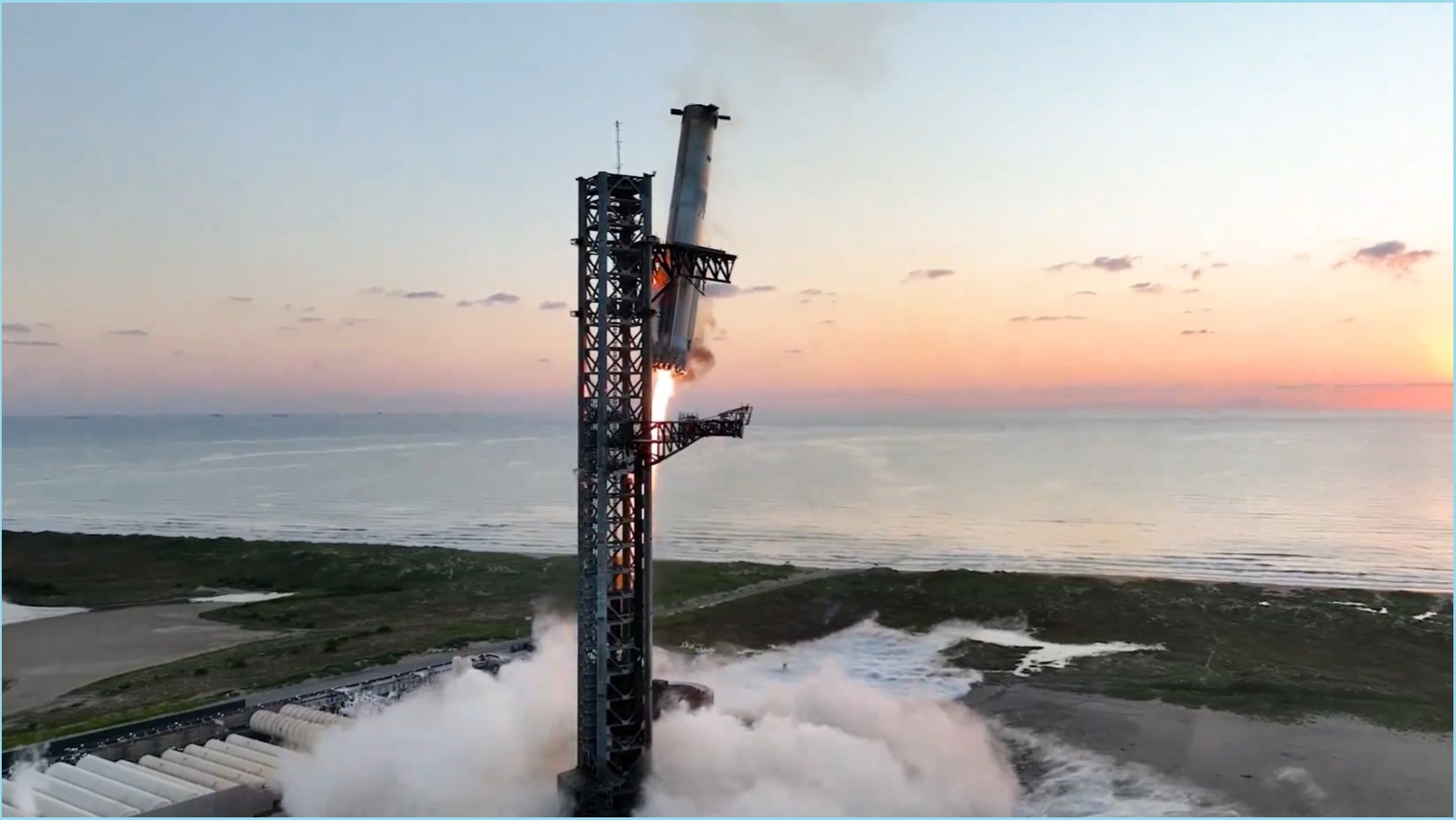Elon Musk’s SpaceX just scored the tech play of the year after rigging a launching tower with mechanical arms to successfully “catch” a returning spacecraft booster.
On Sunday, American spacecraft manufacturer SpaceX conducted its fifth and most ambitious flight test for Starship, the company’s “fully reusable” Super Heavy-lift launch vehicle.
Penned as the “largest and most powerful space transportation system ever developed”, SpaceX’s plans for Starship to enable a “sci-fi future” where humanity can better “access and utilise outer space”, including destinations such as the Moon and Mars.
While the past four Starships either wound up in tatters moments after launch or eventually fizzled into the sea, SpaceX showed some promising results in June when a model completed its entire flight without exploding.
Now, the company has hit another futuristic milestone by not only conducting a successful liftoff, ascent and coast of the Starship vessel, but further detaching and catching the ship’s reusable first-stage booster.
Departing from SpaceX’s launch facilities in Boca Chica, Texas, the 121-metre tall Starship was propelled into space by the detachable ‘Super Heavy booster’.
As the empty Starship vessel continued its course for an eventual atmospheric re-entry and explosive water landing into the Indian Ocean, the Super Heavy booster separated some 74 km in altitude and made its way back to the launch site, where it met the accompanying catch-tower.
Named ‘Mechazilla’, the chopstick-armed tower plucked the fiery Super Heavy booster from the sky, effectively catching it mid-flight for a safe return.
“The tower has caught the rocket!!” Musk said on X.
Minimal damage
Some seven minutes into the flight test, the booster was fully stationary in the tower’s arms - decelerating from about 1,000 km/h to 0 km/h within approximately 30 seconds.
"Folks, this is a day for the engineering history books," said SpaceX's Kate Tice from the company's headquarters in Hawthorne, California.
SpaceX revealed that the catch attempt was far from guaranteed – noting “thousands of distinct vehicle and pad criteria” needed to be met prior to a return and catch.
This requires “healthy systems” on the booster and tower, along with a manual approval from the mission’s flight director to go ahead with the attempt.
"I am shaking right now,” SpaceX's communications manager Dan Huot said while at the launch site.
"Even in this day and age, what we just saw is magic.”
Musk explained that aside from some easily addressable “minor issues”, such as a few “outer engine nozzles” being warped from heating, the Super Heavy booster was caught with minimal damage.
“Just inspected the Starship booster, which the arms have now placed back in its launch mount. Looks great!” said Musk.
“Starship is designed to achieve re-flight of its rocket booster ultimately within an hour after liftoff.
“The booster returns within ~5 minutes, so the remaining time is reloading propellant and placing a ship on top of the booster,” he wrote.
Future plans from the National Aeronautics and Space Administration (NASA) aim for Starship to return humans to the Moon in 2026, while SpaceX itself has been studying how to use Starship for US military deliveries under a contract with the Pentagon.
That military program is expected to escalate in 2025 under deeper collaboration with the US Space Force.
To Jupiter's moon
Meanwhile, on Tuesday morning, NASA’s exploratory, solar-powered spacecraft Europa Clipper was launched en-route for Jupiter’s moon.
“The spacecraft will now travel past Mars, using the planet’s gravity to gain the velocity needed to reach Jupiter’s moon Europa by 2030,” wrote SpaceX.
SpaceX has reportedly engaged in talks with Australian officials to test-land and recover a Starship rocket off Australia’s coast.
Its recent catch-and-launch test comes after Musk unveiled automotive company Tesla’s line of robotaxi and humanoid robot products during a special launch event on Thursday – an underwhelming reveal which preceded a near $100 billion sell-off in company shares.










